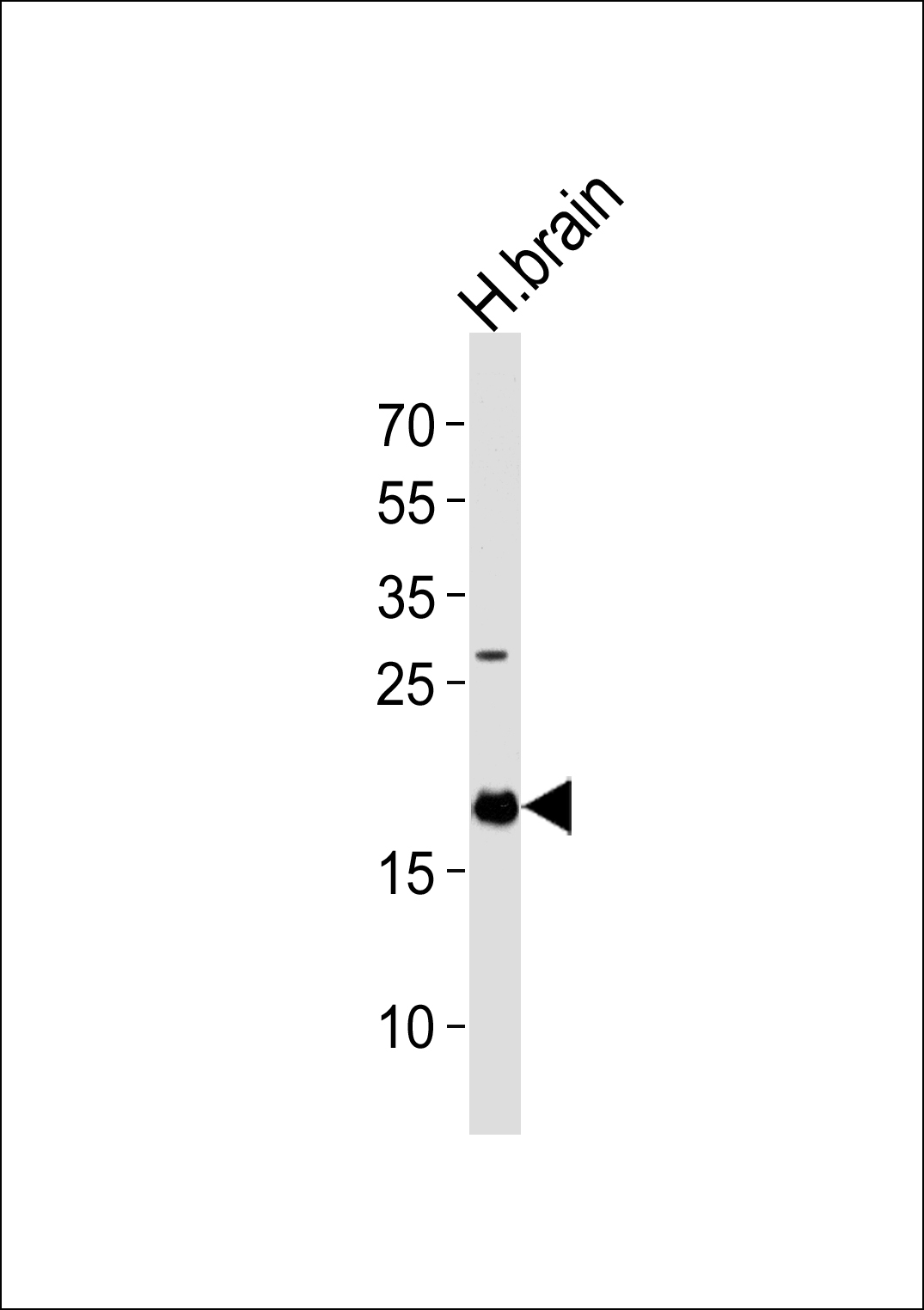EIF4EBP2 Antibody (C-term)
Affinity Purified Rabbit Polyclonal Antibody (Pab)
- 产品详情
- 实验流程
- 背景知识
Application
| WB, E |
|---|---|
| Primary Accession | Q13542 |
| Other Accession | NP_004087.1 |
| Reactivity | Human |
| Host | Rabbit |
| Clonality | Polyclonal |
| Isotype | Rabbit IgG |
| Calculated MW | 12939 Da |
| Antigen Region | 87-115 aa |
| Gene ID | 1979 |
|---|---|
| Other Names | Eukaryotic translation initiation factor 4E-binding protein 2, 4E-BP2, eIF4E-binding protein 2, EIF4EBP2 |
| Target/Specificity | This EIF4EBP2 antibody is generated from rabbits immunized with a KLH conjugated synthetic peptide between 87-115 amino acids from the C-terminal region of human EIF4EBP2. |
| Dilution | WB~~1:1000 E~~Use at an assay dependent concentration. |
| Format | Purified polyclonal antibody supplied in PBS with 0.09% (W/V) sodium azide. This antibody is purified through a protein A column, followed by peptide affinity purification. |
| Storage | Maintain refrigerated at 2-8°C for up to 2 weeks. For long term storage store at -20°C in small aliquots to prevent freeze-thaw cycles. |
| Precautions | EIF4EBP2 Antibody (C-term) is for research use only and not for use in diagnostic or therapeutic procedures. |
| Name | EIF4EBP2 (HGNC:3289) |
|---|---|
| Function | Repressor of translation initiation involved in synaptic plasticity, learning and memory formation (PubMed:30765518). Regulates EIF4E activity by preventing its assembly into the eIF4F complex: hypophosphorylated form of EIF4EBP2 competes with EIF4G1/EIF4G3 and strongly binds to EIF4E, leading to repress translation. In contrast, hyperphosphorylated form dissociates from EIF4E, allowing interaction between EIF4G1/EIF4G3 and EIF4E, leading to initiation of translation (PubMed:25533957, PubMed:30765518). EIF4EBP2 is enriched in brain and acts as a regulator of synapse activity and neuronal stem cell renewal via its ability to repress translation initiation (By similarity). Mediates the regulation of protein translation by hormones, growth factors and other stimuli that signal through the MAP kinase and mTORC1 pathways (By similarity). |
| Cellular Location | Cytoplasm {ECO:0000250|UniProtKB:P70445}. Nucleus {ECO:0000250|UniProtKB:P70445} |
For Research Use Only. Not For Use In Diagnostic Procedures.
Provided below are standard protocols that you may find useful for product applications.
BACKGROUND
This gene encodes a member of the eukaryotic translation initiation factor 4E binding protein family. The gene products of this family bind eIF4E and inhibit translation initiation. However, insulin and other growth factors can release this inhibition via a phosphorylation-dependent disruption of their binding to eIF4E. Regulation of protein production through these gene products have been implicated in cell proliferation, cell differentiation and viral infection.
REFERENCES
Bailey, S.D., et al. Diabetes Care (2010) In press :
Bidinosti, M., et al. J. Biol. Chem. 285(25):19402-19408(2010)
Johnatty, S.E., et al. PLoS Genet. 6 (7), E1001016 (2010) :
Talmud, P.J., et al. Am. J. Hum. Genet. 85(5):628-642(2009)
Gingras, A.C., et al. Virology 237(1):182-186(1997)
终于等到您。ABCEPTA(百远生物)抗体产品。
点击下方“我要评价 ”按钮提交您的反馈信息,您的反馈和评价是我们最宝贵的财富之一,
我们将在1-3个工作日内处理您的反馈信息。
如有疑问,联系:0512-88856768 tech-china@abcepta.com.























 癌症的基本特征包括细胞增殖、血管生成、迁移、凋亡逃避机制和细胞永生等。找到癌症发生过程中这些通路的关键标记物和对应的抗体用于检测至关重要。
癌症的基本特征包括细胞增殖、血管生成、迁移、凋亡逃避机制和细胞永生等。找到癌症发生过程中这些通路的关键标记物和对应的抗体用于检测至关重要。 为您推荐一个泛素化位点预测神器——泛素化分析工具,可以为您的蛋白的泛素化位点作出预测和评分。
为您推荐一个泛素化位点预测神器——泛素化分析工具,可以为您的蛋白的泛素化位点作出预测和评分。 细胞自噬受体图形绘图工具为你的蛋白的细胞受体结合位点作出预测和评分,识别结合到自噬通路中的蛋白是非常重要的,便于让我们理解自噬在正常生理、病理过程中的作用,如发育、细胞分化、神经退化性疾病、压力条件下、感染和癌症。
细胞自噬受体图形绘图工具为你的蛋白的细胞受体结合位点作出预测和评分,识别结合到自噬通路中的蛋白是非常重要的,便于让我们理解自噬在正常生理、病理过程中的作用,如发育、细胞分化、神经退化性疾病、压力条件下、感染和癌症。






